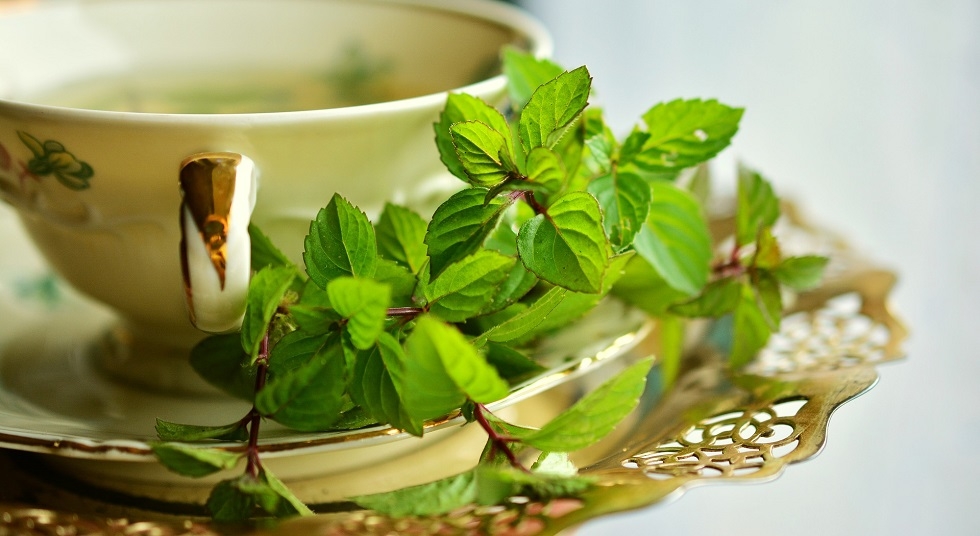Pudina: A global herb that helps digestion
| Date :13-Mar-2019 |

By Rajendra Diwe,
What grandmother says:
Prepare chutney of Pudina leaves and eat regularly to treat digestive problems.
Add few leaves of Pudina in buttermilk and drink for three to four times in case of gases, indigestion, etc.
Four to five drops of Pudina oil or menthol can be consumed with one tea spoon sugar to relieve indigestion and soothe an upset stomach.
Apply drops of Pudina oil on wounds with cotton.
In asthma consume mint to get soothing effect.
For nausea or bad breath chew four to five leaves of Pudina.
Consume juice of Pudina leaves to lose weight.
Apply paste of Pudina leaves with honey to skin to cure many skin problems. Apply on skin for 20 minutes and then wash it with warm water.
In acute fever, cold, prepare juice of Pudina leaves and add juice of ginger and consume. Or prepare a Kadha of Pudina and ginger and consume it to treat fever.
In stomachache or diarrhea mix Pudina leaves with Anardana and consume.
Prepare juice of Pudina leaves and put two drops of it in both nostrils to treat running nose, cough and cold.
In cholera, six gram leaves and three grams of Elaichi should be boiled in half litre of water and consume small portions daily.
In all stomach related problems take 10 ml juice of Pudina leaves, add 50 ml extract of Gulab and 10 gram seeds of Sikanji, prepare paste and consume to treat urticaria.
‘Pudina’ is the most important ingredient in Indian kitchen. Pudina is also known as ‘Pootiha’ in India and Mentha Herb in other countries. As it is an excellent source of ‘Mint’ it is also termed as ‘Peppermint Leaves.’ This herb belongs to botanical family Lamiaceae. There are more than 3,000 species of this family mainly plants, herbs and undershrub. Despite these species, mentha Piperita (cultivated in USA, Russia, Central, Western and Eastern European Countries, England, France and Germany); mentha arvenis (cultivated in Japan, Brazil, South California and India) and mentha virdis (mentha spicata) also known as spearmint and famous in India as ‘Pudina’ are the main species.
In developed countries, Peppermint is one of the oldest and best-tasting home remedies for indigestion. Studies show that peppermint lessens the amount of time food spends in stomach by stimulating the gastric lining. It also relaxes the stomach muscles and promotes burping. Peppermint is excellent for heartburn and stomachache. It is also good for nausea and vomiting. Migraine headaches, which are frequently accompanied by nausea, are often relieved by peppermint. This herb has calming effect on body and can help soothe a nagging cough. Earl Mindell’s Herb Bible states, “Peppermint is an excellent substitute for regular coffee or tea and better tasting too. For headache, try a strong cup of peppermint tea and lie down for 15 to 20 minutes. I think that it works better than aspirin or acetaminophen. Considering all the things that peppermint can do, no home medicine cabinet should be without it! In drop form, peppermint has been used for centuries for colic in infants and in liquid form for older children.”
‘Pudina’ is a rich source of essential oils which gives smell of peppermint and contains more thymol and peppermint. The oil contains hydrocarbons like Menthon (Menthol) and Methyl Acetate. These are all the ingredients of balms used for headache, cough and cold available in India. Pharmacologically, Pudina is antispasmodic, carminative, stomachic, refrigerant, diuretic, digestive, appetizer, tonic and heart tonic. It is used in the treatment of anti-fertility, anti-ovulatory, gastro-intestinal disorders, anti-bacterial; the essential oils extracted from Pudina are anti-fungal; useful in dyspepsia, cough, cold and chronic fever. Mint is loaded with anti-inflammatory properties. It is a good relaxant and relieves congestion. Mint is known to clear congestion of the nose, throat, bronchi, and lungs. In addition to the respiratory channels, mint’s anti-inflammatory properties also relieve the irritation caused by chronic coughing. The strong and refreshing aroma of mint could help ease headaches. Balms with mint base or basic mint oil, when rubbed on the forehead and nose, are effective in curing headaches and nausea. Mint is a traditional remedy for treating acne and pimples. It has potent anti-inflammatory and anti-bacterial properties which work wonders on acne prone skin. Mint leaves contain a high content of salicylic acid, which is excellent in combating acne action too. The juice obtained from mint works as an effective skin cleanser.
References: u The Ayurvedic Pharmacopoeia of India u WHO Monographs on Selected Medicinal Plants u Glossary of Indian Medicinal Plants by R N Chopra u Earl Mindell’s Herb Bible, published by Simon and Shuster New York in 1996 u Ayurved Ka Pran, Vanaushadhi Vidnyan, published by Department of Garden and Herbs, Shri Vedmata Gayatri Pariwar Trust Haridwar u K M Nadkarni’s Indian Materia Medica, published by Bombay Publication 1976 u Text Book of Pharmacognosy, T E Wallis u Pharmacognosy and Pharmacobiotechnology, Ashutosh Kar, New Delhi.